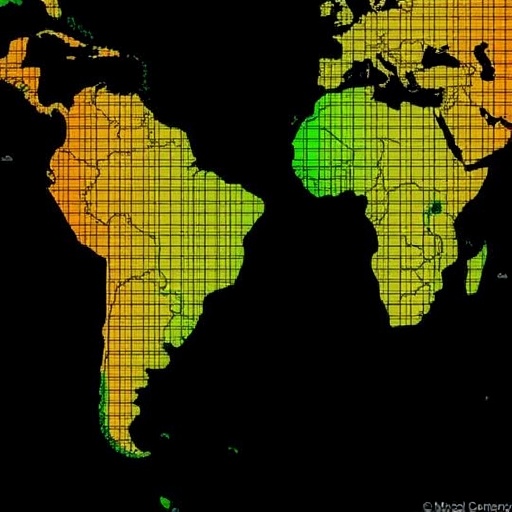
In the rapidly evolving field of forensic genetics, the demand for more precise tools capable of unraveling the complexities of human identity and ancestry has never been higher. Cutting-edge research recently undertaken in Brazil has focused on one such promising tool: microhaplotypes. These tiny segments of DNA hold the key to next-generation forensic analysis, particularly in regions characterized by rich genetic diversity and complex population structures. A groundbreaking study by Kobachuk, Moraes, Carratto, and colleagues has provided an illuminating assessment of a novel microhaplotype panel crafted specifically for human identification and ancestry inference within the Brazilian population, promising a leap forward in forensic accuracy and application.
Microhaplotypes are small, dense clusters of closely linked single nucleotide polymorphisms (SNPs) that reside within very short stretches of DNA. Unlike the traditional forensic markers that rely on short tandem repeats (STRs), microhaplotypes present a higher degree of variation and stability. This makes them not only ideal for individual differentiation but also incredibly useful in determining population-specific ancestries due to their unique allele distribution patterns. The panel designed by the Brazilian research team leverages these advantages, showcasing superior capability to distinguish individuals and unravel lineage backgrounds in a country renowned for its complex admixture.
Brazil represents a particularly challenging environment for forensic genetics due to its intricate demographic history. With ancestral contributions from Indigenous Americans, Europeans, Africans, and more recent migratory influxes, the Brazilian gene pool is an entangled mosaic. Traditional markers often fall short in effectively navigating such complexity, sometimes leading to ambiguous or inconclusive results. Therefore, the microhaplotype panel developed by Kobachuk and colleagues fills a critical gap, offering a high-resolution genetic tool that respects and reflects Brazil’s unique population structure.
.adsslot_rsezyLpfOh{width:728px !important;height:90px !important;}
@media(max-width:1199px){ .adsslot_rsezyLpfOh{width:468px !important;height:60px !important;}
}
@media(max-width:767px){ .adsslot_rsezyLpfOh{width:320px !important;height:50px !important;}
}
ADVERTISEMENT
The study underlines that microhaplotypes can mitigate the limitations posed by conventional forensic markers. For starters, their short length makes them highly amenable to analysis from degraded DNA samples, which is a common challenge in forensic casework. In addition, their ability to capture more allelic combinations within a compact genomic region enhances discrimination power. This is pivotal not only for individual identification but also crucially for inferring biogeographical origins in scenarios where suspect ancestry is an essential lead in investigations.
To validate the practical utility of their microhaplotype panel, the researchers conducted comprehensive analyses across diverse Brazilian populations. These assessments revealed that the microhaplotype markers exhibit substantial polymorphism and heterozygosity across groups, affirming their effectiveness across varied genetic landscapes. The findings suggested clear differentiation between ancestries, highlighting the panel’s capability to ascertain not just broad continental origins but also finer population stratifications pertinent to Brazil’s demographic realities.
A significant technical highlight of the research lies in the panel’s integration of multiple microhaplotype loci, simultaneously considered to generate a multilocus genotype—a genetic fingerprint stronger and more discriminative than single-locus analyses. This multilocus approach improves the accuracy of forensic identifications and ancestry assignments, reducing the probabilities of misleading conclusions. From a practical standpoint, this translates to a forensic instrument that can provide courts and investigators with higher confidence in linking individuals to biological evidence or discerning ancestry with a greater level of resolution.
Importantly, the panel’s design emphasizes compatibility with contemporary sequencing technologies, particularly massively parallel sequencing (MPS). This synergy allows for high-throughput, cost-effective genotyping while preserving the analytical sensitivity necessary for challenging forensic samples. The multiplexing capacity of MPS enhances the applicability of microhaplotypes to forensic casework and population studies, bridging the gap between research innovation and operational forensic practice seamlessly.
Ethical considerations surrounding ancestry inference are critical in forensic genetics, especially in multiethnic countries like Brazil where social perceptions of race and identity are often complex. The authors acknowledge the importance of cautious interpretation of genetic findings within sociocultural contexts, emphasizing the panel’s role as a scientific tool to complement other investigative methods rather than defining individual identity in isolation. This responsible approach fosters trust and mitigates potential misuse or misinterpretation of genetic data in legal or social frameworks.
The forensic community stands to gain substantially from the introduction of microhaplotype panels due to their enhanced robustness against null alleles and reduced mutation rates relative to STRs, traits that contribute to more stable and reproducible results over time. This stability is particularly critical in forensic databases, ensuring that profiles remain valid and comparable across temporal gaps and technological evolutions within laboratories.
From the perspective of ancestry inference, microhaplotypes excel by capturing subtle genetic signals that reflect migration, admixture, and population dynamics with greater granularity than traditional SNP panels. By applying this technology in Brazil, the study underscores how region-specific marker panels can refine our understanding of local genetic diversity, aiding not only forensic objectives but also anthropological and medical genetics research.
Another groundbreaking aspect illuminated by the research is the potential for microhaplotypes to contribute to mixture deconvolution — analyzing biological samples containing DNA from multiple contributors. Given that forensic samples often present this challenge, the panel’s ability to disentangle complex genetic mixtures with higher precision represents a substantial step forward, facilitating more accurate crime scene reconstructions and suspect identifications.
Furthermore, the Brazilian study offers an important framework for other countries with similarly complex population histories. The methodological pipeline presented—from marker selection, validation, to population sampling—can be adapted globally, informing forensic genetics strategies in increasingly diverse and admixed societies. This positions microhaplotypes not merely as a Brazilian innovation but as a model for contemporary forensic practice worldwide.
In conclusion, the comprehensive evaluation of a specialized microhaplotype panel for human identification and ancestry inference epitomizes the trend towards more nuanced, efficient, and powerful genetic tools in forensic science. By harnessing the unique genetic architecture of microhaplotypes and tailoring them to the Brazilian population’s complexity, Kobachuk and colleagues demonstrate a major advancement that holds promise for legal medicine, criminal investigations, and the broader understanding of human genetic diversity.
This pioneering research invites us to envision a future where forensic investigations are empowered by genetic markers that are not only accurate and robust but are also sensitive to the cultural and demographic intricacies of the populations they serve. The intersection of molecular innovation and forensic application heralds a new era in which justice is informed by the finest resolution of human genetic information.
Subject of Research: Assessment of a microhaplotype panel for human identification and ancestry inference in the Brazilian population.
Article Title: Assessment of a microhaplotype panel for human identification and ancestry inference in Brazil.
Article References:
Kobachuk, L.D.G., Moraes, V.M.S., Carratto, T.M.T. et al. Assessment of a microhaplotype panel for human identification and ancestry inference in Brazil. Int J Legal Med (2025). https://doi.org/10.1007/s00414-025-03573-4
Image Credits: AI Generated
Tags: advancements in forensic accuracyancestry inference using microhaplotypescomplex population structures in Brazilforensic genetics innovationsgenetic diversity in Brazilhuman identification tools in Brazilindividual differentiation in geneticsmicrohaplotype panel researchmicrohaplotypes for forensic geneticsnext-generation forensic toolspopulation-specific ancestry determinationSNPs in forensic analysis






